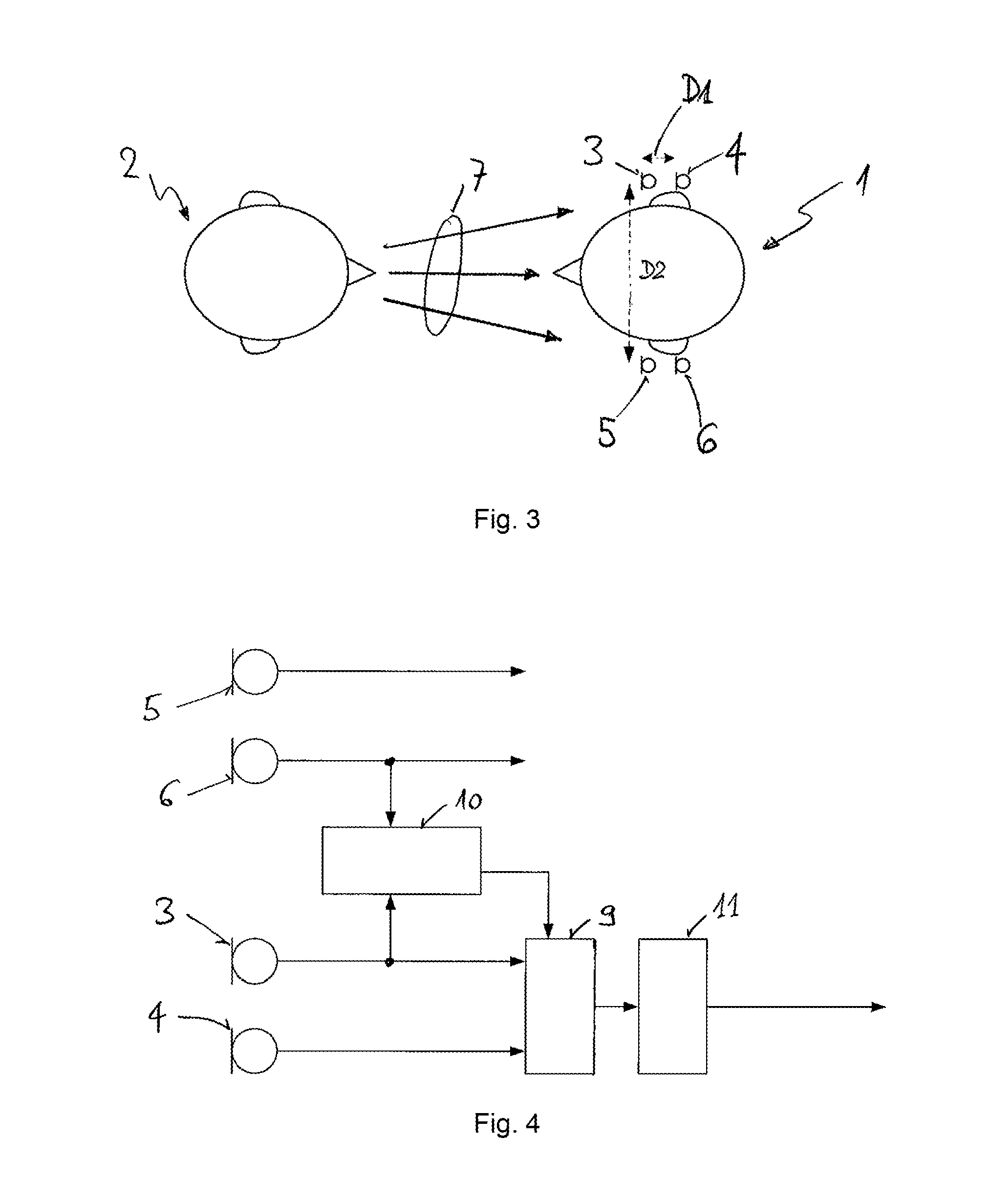Method for adaptively matching microphones of a hearing system as well as a hearing system
a technology of adaptive matching and hearing system, applied in the direction of deaf-aid sets, microphone signal combination, electrical apparatus, etc., can solve the problems of insufficient phase matching of available microphones to achieve satisfactory beamforming, and inability to accurately match microphones, so as to achieve effective beamforming and improve speech intelligibility
- Summary
- Abstract
- Description
- Claims
- Application Information
AI Technical Summary
Benefits of technology
Problems solved by technology
Method used
Image
Examples
Embodiment Construction
[0049]FIG. 1 shows a common situation which is suitable to perform a microphone matching according to the present invention. The situation is characterized in that a hearing system user 1 is confronted with a single sound source 2. The single sound source 2 is a person speaking to the hearing system user 1. The hearing system user 1 wears a hearing device in one of his ears—also known as monaural hearing system—, the hearing device comprising two microphones 3 and 4. The microphones 3 and 4 or a signal path up to a beamformer, respectively, have to be matched in phase and magnitude over a frequency range of interest to enable effective and accurate beamforming. Thereby, it has been shown that a phase matching is particularly important for lower frequencies, i.e. for frequencies below 1 kHz, for example, than for higher frequencies, i.e. for frequencies above 1 kHz, for example. Since microphones are usually sufficiently well matched by the manufacturer above approximately 1 kHz, pha...
PUM
 Login to View More
Login to View More Abstract
Description
Claims
Application Information
 Login to View More
Login to View More - R&D
- Intellectual Property
- Life Sciences
- Materials
- Tech Scout
- Unparalleled Data Quality
- Higher Quality Content
- 60% Fewer Hallucinations
Browse by: Latest US Patents, China's latest patents, Technical Efficacy Thesaurus, Application Domain, Technology Topic, Popular Technical Reports.
© 2025 PatSnap. All rights reserved.Legal|Privacy policy|Modern Slavery Act Transparency Statement|Sitemap|About US| Contact US: help@patsnap.com



